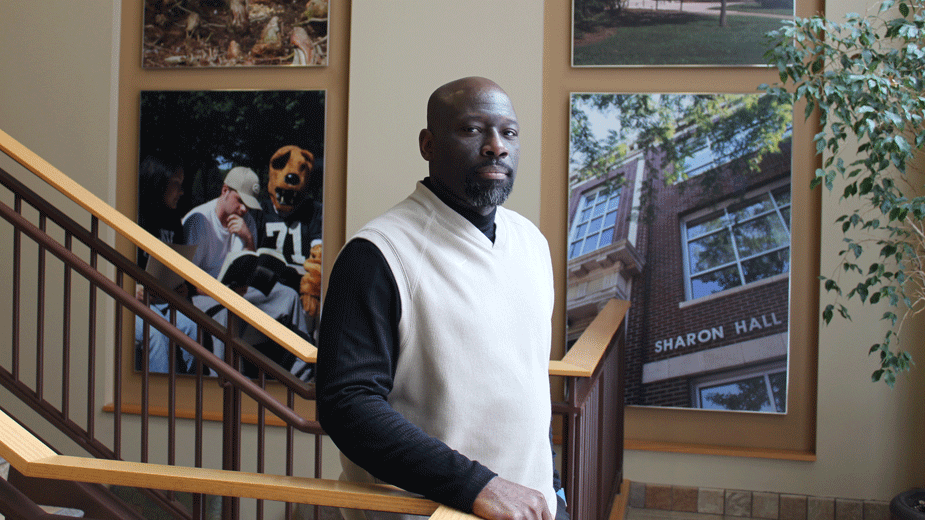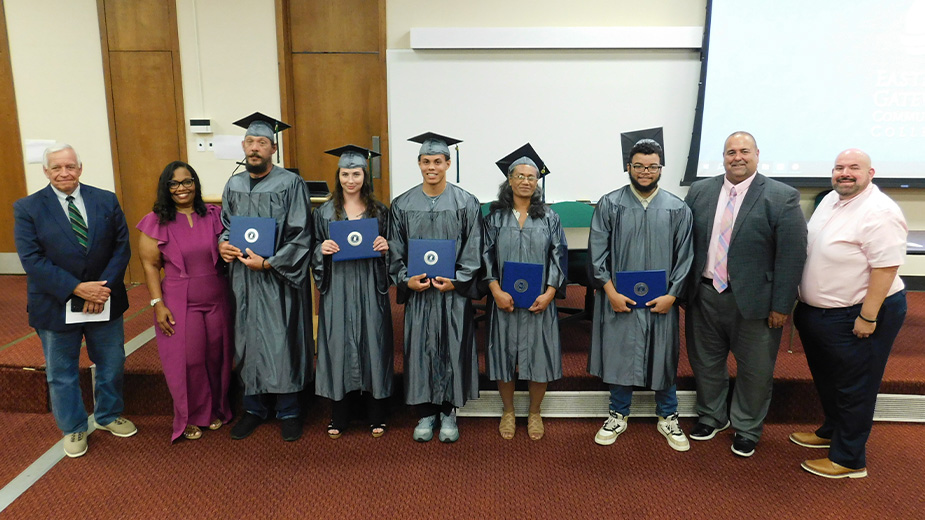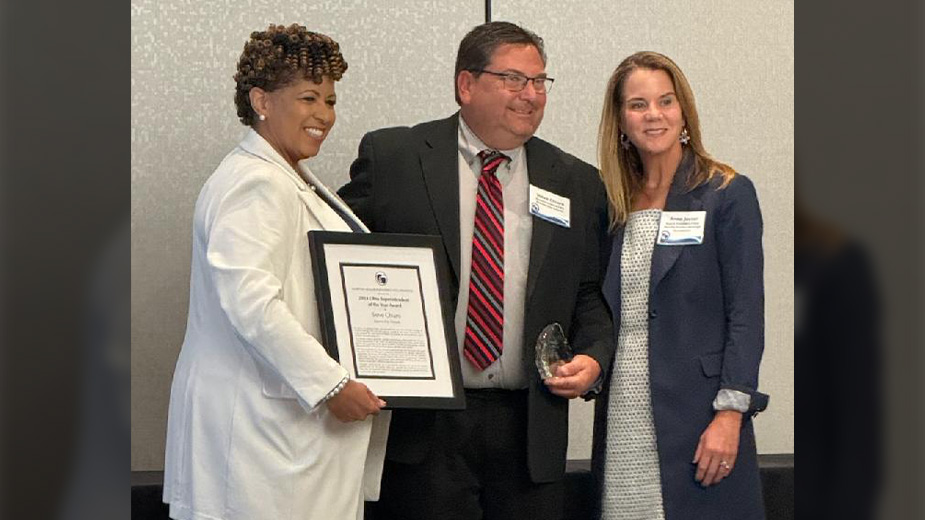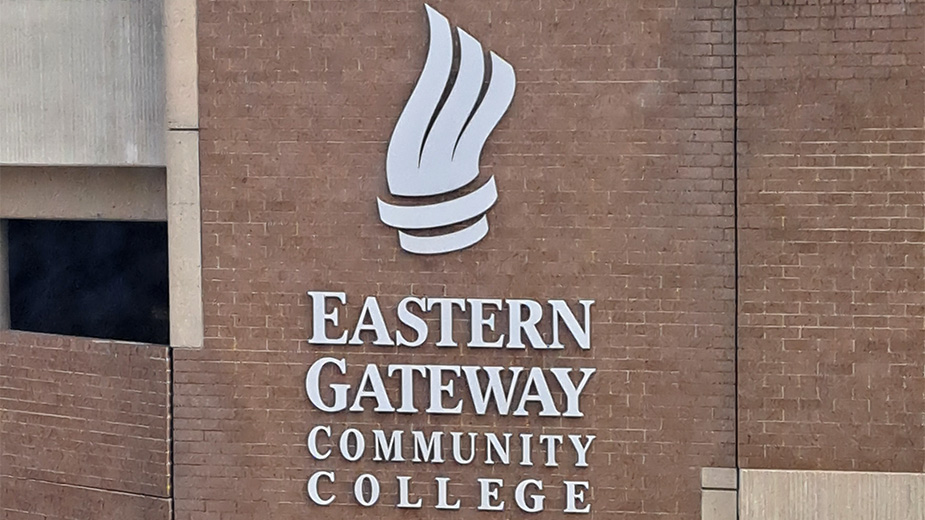Sports Programs Score at Small College Campuses
YOUNGSTOWN, Ohio – Briana Ellwood has been a cross-country runner most of her life. She started in the sixth grade as a runner for Niles Middle School and hasn’t stopped. Today, she’s one of the five runners who represent the Kent State University at Trumbull Titans.
Her teammate Vanessa Hedrick has a very different story. Before her first practice with the Titans, she had never run competitively. In fact, she had never played in any organized sport.
“It was scary to begin with but everyone was supportive. They pushed me but gave me my space,”Hedrick says. “They pushed me but not so far that I didn’t want to be on the team anymore.”
In the Titans’ first year of competition after a decades-long hiatus, those were the kind of results that campus administrators had in mind, says Lance Grahn, dean of the campus.
“I’m proud that we started cross-country in a way that it was open to an experienced runner like Briana and a brand-new runner like Vanessa,” he says. “That would not have happened at Kent State [the main campus] or Youngstown State or Ohio State. It can happen here.”
Like Kent State Trumbull, other college athletics programs are sprouting up in the area. On March 3, the first pitch for the Eastern Gateway Community College Gators’ baseball team will be thrown and, in November, Nittany Lions basketball will return to Penn State Shenango.
Where Kent State Trumbull’s team is organized as a student group, both Eastern Gateway and Penn State Shenango’s teams are official sports overseen by newly created athletics departments. And the process of creating an athletics program isn’t as simple as speaking it into existence.
 Former YSU basketball player and coach Andre Smith leads Penn State Shenango’s athletic department and men’s basketball team.
Former YSU basketball player and coach Andre Smith leads Penn State Shenango’s athletic department and men’s basketball team.
“You have to write drug policies, work with academics so they understand the limits for what a kid can miss and how to make up work, figure out your athletic trainers, find out where we play, write transportation policies, scheduling,” says Andre Smith, the athletics director and men’s basketball coach at Penn State Shenango.
This is the second time Smith has been involved in the creation of a program. The former Youngstown State University player and assistant coach was the first athletics director for Lourdes University when the school launched four sports in 2010 and added 13 more during his tenure. In total, he says, it takes at least 15 months – and up to two years – to have all the pieces in place.
“There’s a lot of financial information you have to provide. You have to show that you have the resources to continue in the league,” he says. “You can’t start something, then cancel games because you don’t have the resources to get players there or get players their uniforms.”
Eastern Gateway athletics director John Zizzo adds that ensuring the community college had those resources was concern No. 1 and, with the help of President Jimmie Bruce, raised the necessary funds.
“The second-hardest thing is recruiting. We’re a nonscholarship program, a [National Junior College Athletic Association] Division III program and will be for the next four years,” he says. “There are academic grants available for all students and athletes, which does help. But there is no athletic stipend. You’re at the bottom of the totem pole when it comes to choices for players, but the junior college option is very good. It’s an inexpensive way to start school.”
 EGCC baseball coach Phillipp Panno works with infielder Doug Painter on his swing.
EGCC baseball coach Phillipp Panno works with infielder Doug Painter on his swing.
Among the most-touted benefits of satellite campuses and community colleges is the lower cost of an education. But for many, the phrase “athletics department” conjures up the image of multimillion dollar efforts of schools such as Ohio State University, whose sports programs racked up $166.8 million in expenses and $170.8 million in revenues in the 2015-2016 school year.
The three campuses nearby are nowhere near that size, obviously. Still, the arrival of new teams bolsters the on-campus experience for students.
“It’s another way in which you can come to a regional campus and experience university life,” says Kent State Trumbull’s Grahn. “Just like having the bookstore or the cafe, it’s part of the college experience.”
Adds Michelle Adkins, the Kent State Trumbull cross-country team coordinator and campus career adviser, “[Vanessa] said that it’s not just about running. She wanted to be part of something that’s bigger than just her. That’s part of the campus experience, too.”
And while the Gators, Nittany Lions and Titans aren’t going to be pulling in blue chip recruits from across the country, there’s still a particular type of player the teams want. Zizzo says he and coach Phillipp Panno are employing Jim Tressel’s “State of Youngstown” strategy that he used as football coach at YSU.
“I want to see the desire to win. Obviously everyone wants to win, but the desire is just as great as winning itself,” Panno says. “To me, I want the guys to be comfortable in the league, get introduced and grow with new players.”
And at Penn State Shenango, Smith wants a Division I-mentality from players even though they’ll be playing at a lower level. In return, he says, they’ll get the same treatment he gave his players at Youngstown State.
“Everywhere I’ve been, I’ve run it like Division I. If you treat kids like they’re Division I, then they’ll prepare and try like they are,” he says. “The basic ingredients to being successful are the same.”
Pictured: At Kent State Trumbull, Lance Grahn, Michelle Adkins and Bill Hess revived Titans athletics with cross-country.
Copyright 2024 The Business Journal, Youngstown, Ohio.



